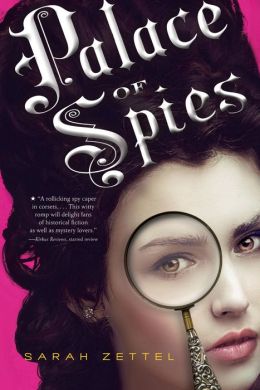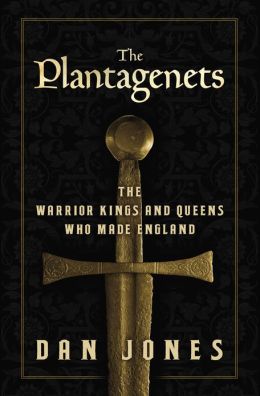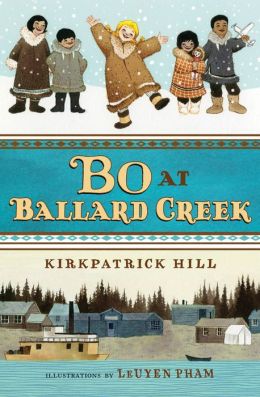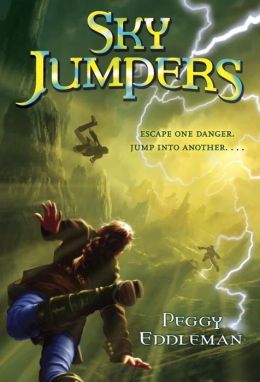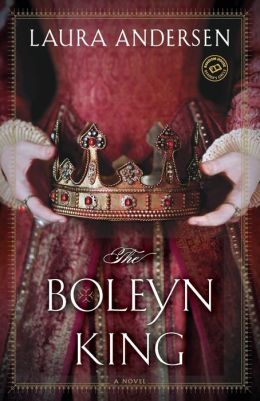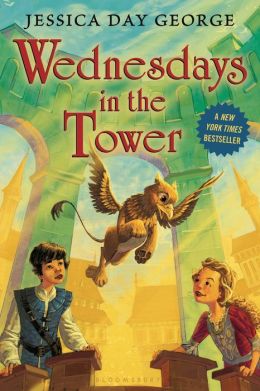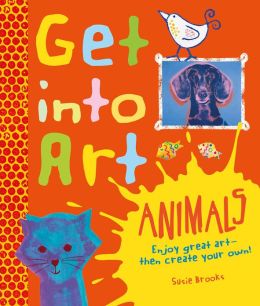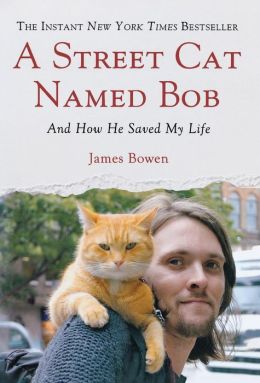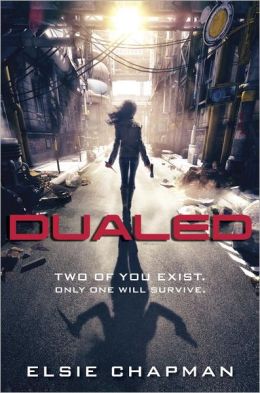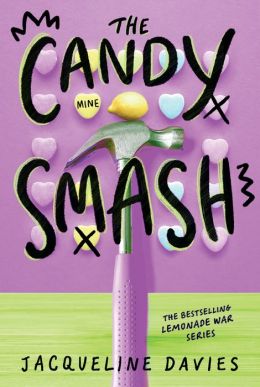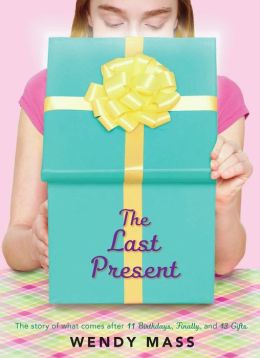new posts in all blogs
Viewing: Blog Posts Tagged with: 2013, Most Recent at Top [Help]
Results 26 - 50 of 133
How to use this Page
You are viewing the most recent posts tagged with the words: 2013 in the JacketFlap blog reader. What is a tag? Think of a tag as a keyword or category label. Tags can both help you find posts on JacketFlap.com as well as provide an easy way for you to "remember" and classify posts for later recall. Try adding a tag yourself by clicking "Add a tag" below a post's header. Scroll down through the list of Recent Posts in the left column and click on a post title that sounds interesting. You can view all posts from a specific blog by clicking the Blog name in the right column, or you can click a 'More Posts from this Blog' link in any individual post.
Palace of Spies. Sarah Zettel. 2013. Houghton Mifflin Harcourt. 368 pages. [Source: Library]
Peggy Fitzroy lives with her aunt, uncle, and cousin. She knows she's not wanted, her aunt and uncle have made that clear. But she gets along quite well with her cousin, Olivia. The novel opens with Peggy in a difficult position. Her uncle has arranged a marriage for her. She's not thrilled instead more than a little hesitant. Her hesitation only increases AFTER she meets him at a ball. Her intended isn't the only person she meets there, however. One other mystery man makes her acquaintance. He offers her a way out. He tells her that he knew her mother. He wants to make a deal with her, of sorts. He wants her to spy for him, to impersonate one of the Queen's maids. (Ladies-in-waiting?) He leaves her with his card. She's curious but just as hesitant about that option as well. If only she could have some control over her own future...
With a title like Palace of Spies, it's obvious what her choice was. She will become Lady Francesca Wallingham. Can she learn enough from Mr. Tinderflint and Mr. Peele? Do they know enough about her to tell her everything she needs to know to pass as this lady? Is either man trustworthy? What are their intentions? What will they do with the information she provides? Who can she trust at court? Did Lady Francesca have enemies? How will she be able to discern who her friends were and who her enemies were? Will she fool anyone? Will she fool everyone? Will she ever get a minute to call her own? How long will this deception last?
I enjoyed this one. I think I enjoyed it even more having read Lucy Worsley's
The Courtiers: Splendor and Intrigue in the Georgian Court at Kensington Palace earlier this year. I was familiar with several of the characters. It was quite entertaining with a nice balance of danger and romance.
© 2014 Becky Laney of
Becky's Book Reviews
The Plantagenets. Dan Jones. 2013. Viking. 560 pages. [Source: Library]
I enjoyed reading this overview of British history. The book examines the reigns of a handful of Plantagenet kings: Henry II, Richard I, John, Henry III, Edward I, Edward II, Edward III, and Richard II. It spans several centuries: 1120-1399. It also overlaps a bit with French history.
The book opens with "The White Ship." It's a dramatic way to start a book. Henry I, the son of William the Conqueror, loses his son and heir in a shipwreck. Henry I has two dozen illegitimate children--give or take one or two. But his only legitimate child is a daughter, Matilda. He remarries hoping presumably to have another child--a son, a new heir. But that is not to be. He marries the widowed Matilda off--it was anything but a love match--and she starts having children of her own, many of them sons. He leaves his kingdom to his daughter, supposedly everyone has sworn their allegiance to her, but, in reality, she's never in a position to reign as queen. Her cousin, Stephen, reigns instead. War follows, naturally. It is not a short war, a quick and decisive war. It is a here and there, on-and-off again war where the people suffer for the family squabble most. Eventually, an agreement of sorts is reached, Stephen will pass the crown to Matilda's son, Henry II. He is the first Plantagenet king. Henry II, if you remember, is married to Eleanor of Aquitaine, the former French queen as well. They have many children together...
The book follows the reigns of each king. It goes into detail with politics and economics. It goes into detail with the struggles of each king. Their strengths and weaknesses, their battles. Sometimes these battles are with the church; sometimes these battles are with the French; sometimes these battles are with the Irish or the Welsh or the Scottish; sometimes these battles are with their own flesh and blood, their family; sometimes these battles are with their own countrymen, the barons, the nobility, or even the peasants. No one king has it all. No one king has a perfect, problem-free reign. It wouldn't necessarily be fair or right to sort the kings into two groups of "good" and "bad." Some kings had a reputation of being horrible, and yet they didn't do anything over and above what other kings before them or after them did. Writers of all centuries can label kings this or that, but, that is because historians can be biased. (Some are openly biased. Some not so much.)
As for the details about each king, what can I say? It's an overview, a detailed overview, to be sure. Some readers may be more of an expert and find fault with statements here and there throughout the book. They may spot myths presented as fact. But I certainly can't be among them. I don't know enough about each and every king.
I found the book to be interesting. Some chapters were more fascinating than others. Some chapters even seemed a bit confusing. But I kept reading.
© 2014 Becky Laney of
Becky's Book Reviews
Bo at Ballard Creek. Kirkpatrick Hill. Illustrated by LeUyen Pham. 2013. Henry Holt. 288 pages. [Source: Library]
I loved Bo at Ballard Creek. Did I love, love, love it? I'm not sure. Time will tell. I certainly loved many things about it.
I loved the setting, that it's historical fiction, set in Alaska, set in a small mining town, in the 1920s. I loved the perspective, Bo, the heroine is young adopted girl. For most of the book, she's too young to attend school. So perhaps in the four to six range throughout the book. Readers meet Bo, her two fathers Jack Jackson and Arvid Ivorsen. (One is black. One is Swedish.) Readers meet the whole community: other miners and former miners mostly men, of course, all ages and ethnicities; Eskimo families, and the dance-hall girls. I loved the narration and the amount of detail. I love that the book covers a whole year, if not a little more. So readers see the community in detail throughout the year. One gets a real sense of what was like on a day-to-day, week-to-week, month-to-month basis. On ordinary days. On special days. Special days being not just holidays, but, also days where airplanes stop and land, the days when supplies arrive. I love the vignettes of the whole town. I loved the strong sense of family and community in this one. It just felt right from cover to cover. I also loved the illustrations. I'll be honest. It was seeing LeUyen Pham's name that made me pick this one up. That being said, I may have loved her illustrations. But I also LOVED the text itself.
If the book lacks anything, however, it may be a strong plot. Think Little House In the Big Woods. The chapters are strong in description and characterization and little happenings. I loved it. I did. I loved meeting Bo. I loved some of the relationships in the book.
© 2014 Becky Laney of
Becky's Book Reviews
Dark Triumph (His Fair Assassin #2) Robin LaFevers. 2013. Houghton Mifflin Harcourt. 387 pages. [Source: Review copy]
I first read and reviewed Dark Triumph in
March 2013. Dark Triumph isn't a book that one necessarily ENJOYS. It's a dark, exposing-ugly-sins historical novel in Robin LaFevers' His Fair Assassin series. (
Grave Mercy, which I also recently reread, is the first in the series.)
Both books are dark. Though reading Dark Triumph makes Grave Mercy appear to be light and fluffy. Both books star assassin nuns. Young women trained at a convent who serve Death as a master, who carry out their master's orders, who kill in other words.
Sybella is the heroine in Dark Triumph. Her story is dark, ugly, desperate. She's a strong heroine. She doesn't hold onto hope so much as vengeance. Her will to live comes from a desire--a need--to kill those that have harmed her. The people that have hurt her most are her very own family: her father and brothers. (Readers learn of the events that led her to the convent.) Her father is
Lord D'Albret. (A few details are historically accurate--the names of two of his daughters, Charlotte and Louise, for example, but almost everything is fictional. One should not take LaFevers' depiction as fact.)
Dark as it was, as ugly as it was, I enjoyed Sybella as a character. Her story was beautifully told. I especially loved the romance. I loved, loved, loved "The Beast" of Waroch. Their romance was not typical, it was unique and strong and tender and oh-so-right.
© 2014 Becky Laney of
Becky's Book Reviews
 I definitely liked All The Truth That's In Me by Julie Berry, which I'm going to describe as a literary mystery. (Though, wait, it's also a romance.) I liked it enough that I tried to find time during the day to sneak in some reading. I liked it even though there were some odd little quirks that would normally bother me.
I definitely liked All The Truth That's In Me by Julie Berry, which I'm going to describe as a literary mystery. (Though, wait, it's also a romance.) I liked it enough that I tried to find time during the day to sneak in some reading. I liked it even though there were some odd little quirks that would normally bother me.
- It took me a few pages to grasp the book's episodic nature, even though the episodes, often quite short, were clearly defined by Roman numerals. The episodes were usually in the main character, Judith's, present, when she is living in a socially rigid village where she has returned after having been kidnapped around the same time that one of her friends was murdered. But sometimes the episodes were in her past when she was kept captive by a dangerous man who released her after maiming her so she couldn't speak.
- I was a little put off by the lack of definition as far as the setting was concerned. It seemed to be a Puritan world to me, but the text never makes that clear and an attack from the homeland is not consistent with the Puritan era, at least to my knowledge.
- On a superficial level, Judith seems to be like Belle in the Twilight series. Men are mysteriously attracted to her. However, though the author doesn't clearly state it, I was able to see the logic of what was happening. In one case, Judith was not actually an object of desire, she was merely available. In another she is being pursued by someone hoping to take advantage of her. Only with the third man is there a real relationship. I can believe one.
Among the many things I liked about this book:
- It doesn't scream "I'm a mystery!" Though the book is supposed to have received a lot of attention last year when it was published, I didn't know anything about it. The fact that this is a mystery was sort of slowly revealed as I was reading it.
- There's a big battle scene early in the book. It was what would have been THE big climactic scene for many writers, but it came early. I definitely was wondering what was going to follow that.
- A secondary young woman character could have been a stereotypical twenty-first century teen bitch placed in a Puritan village. But she's not.
- Judith's slow understanding of what happened to friend Lottie, as well as of things she saw while a captive, and her slow reveal of what she knows, make sense.
I think an argument could be made that some scenes border on melodrama, what with one character throwing herself upon her injured beloved, another throwing himself off a cliff, and still another stripping naked to ford a water in river. Evidently I like a little melodrama.
I'm not big on reading holiday books these days. I'll often think that it would be nice to read something related to Christmas during December, but my mind runs to things like
Hogfather and I never get around to reading even those. I ended up reading
Zeke Meeks vs the Horrendous Halloween by
D.L. Green with illustrations by
Josh Alves because I heard on Facebook yesterday that the eBook edition was on sale for 99 cents. I love an eBook sale and
Zeke Meeks is a series for young readers, something
I was interested in a few years ago.
And thus I read a Halloween book.
ZM vs the Horrendous Halloween is a book for kids in the early grades. It involves a realistic story about one thing after another going wrong for Zeke on his big day, Halloween. Nothing is random here. Everything that's brought up about a character is used at some point. There is a dry, sly humor that works and good use of recurring material. I'm thinking, for instance, of the Princess Sing-Along lyrics, which I liked from the very beginning. "Don't feel that you have to change. It's okay to act real strange."
Zeke Meeks vs. the Horrendous Halloween was quite a nice Halloween surprise because it's different from so many of the other books for this age group I've seen, books that didn't involve any kind of intelligible story because of the random action, characters, and so-called humor. If
The Horrendous Halloween is representative of the rest of the series, other
Zeke Meeks are worth giving a try.
Regarding the eBook edition: Some eBooks with illustrations don't translate terrifically to the eBook format. This one was just fine. The 99 cent sale is supposed to be continuing this week, though I don't know when the week ends.
The Bling Ring: How a Gang of Fame-Obsessed Teens Ripped Off Hollywood and Shocked the World by Nancy Jo Sales. It Books. 2013. Library copy. Inspired film by the same name.
by Nancy Jo Sales. It Books. 2013. Library copy. Inspired film by the same name.
The Bling Ring .
.
It's About: The true story of how, in 2008 - 2009, a bunch of teens broke into the homes of their favorite celebrities and stole clothes and jewelry.
The Bling Ring explores who those teens were, how they planned the crimes, and how they were caught.
The Good: Both the film and the movie view this series of home robberies as an opportunity to examine entitlement celebrity fan culture. The teens targeted those people they liked, not those they didn't. They wanted to be in those homes, go through their closets, wear their clothes. It was part celebrity worship, but it was also part entitlement. Why shouldn't they do this?
The reader is as much a voyeur as those teens, reading about the robberies and the celebrities, laughing at those rich people with poor security. The movie ups that aspect by filming in the actual locations, including some of the homes.
I found it helpful to read the book before the film: the film changes some things to the make the story more linear, less messy, so consolidates and shifts some events. In simplifying the story, some of the nuance and depth is lost. That the "ring" was messy is part of the point of the underlining story.
A book like this is dependent on who talks to the writer, and not all of the teens spoke with Sales. While understandable, it also means that the reader is left with not enough understanding of just exactly what happened, who was involved, how involved they were, etc. Still, it's a pretty valuable examination of a certain type of teenager as well as a look at what happens when they get caught.
Amazon Affiliate. If you click from here to Amazon and buy something, I receive a percentage of the purchase price.
© Elizabeth Burns of
A Chair, A Fireplace & A Tea CozyThi


 I've said before that my idea of an environmental book is one that immerses readers in some kind of natural experience. I'm not sure that Lifetime, by Lola M. Schaefer with illustrations by Christopher Silas Neal, really does that. As the Kirkus reviewer said of it, "Is this book about the natural world? Counting? Statistics? Solving math word problems?" But the natural world is in there.
I've said before that my idea of an environmental book is one that immerses readers in some kind of natural experience. I'm not sure that Lifetime, by Lola M. Schaefer with illustrations by Christopher Silas Neal, really does that. As the Kirkus reviewer said of it, "Is this book about the natural world? Counting? Statistics? Solving math word problems?" But the natural world is in there.
I can't say I know a lot about math. But what seems to be going on in Lifetime is an introduction to the concept of counting as well as the recognition that counting things is part of life. This isn't a traditional counting book, as in "1 papery egg sac," "2 caribou," "3 alpacas." It's just about counting. You can count the number of antlers a caribou will grow and shed in a lifetime. (10) You can count the number of beads a rattlesnake will add to its rattle. (40)
There are all kinds of animals out there, and you can count things related to them.
Hmm. Maybe there is an immersive experience here, one in which we take a human created activity and apply it to the natural world that animals live in.

By:
Becky Laney,
on 10/9/2014
Blog:
Becky's Book Reviews
(
Login to Add to MyJacketFlap)
JacketFlap tags:
Random House,
J Fiction,
J Science Fiction,
MG Fiction,
review copy,
postapocalypse,
2013,
books reviewed in 2014,
MG Science Fiction,
Add a tag
Sky Jumpers. Peggy Eddleman. 2013. Random House. 288 pages. [Source: Review copy]
I loved, loved, loved Sky Jumpers by Peggy Eddleman. I didn't expect to love it that much. I certainly wanted to enjoy it, to love it even. I always want to like what I read. I was swept away by Sky Jumpers. I found it impossible to put down! I thought the world-building was fantastic. I thought the characterization was so well done. And the plotting too. Really, I have no complaints actually! Everything just works so very well in this one. It is intense and dramatic when it needs to be, and full of heart when it needs to be. It balances action with emotion.
Hope Toriella is the heroine of Sky Jumpers. I loved Hope. I did. Hope is different from the others in the community of White Rock. It seems EVERYONE in the community is good--if not great--at inventing. And since everyone over the age of four is encouraged--strongly encouraged--to invent things throughout the year, to be good at it means that you belong, that you fit. Why are inventions so central to the community? Well, the world has been devastated by World War III. And surviving communities are trying to rebuild and survive. Anything that can make surviving easier, anything that enhances life in the community is a very, very good thing. Hope has strengths. She does. But they aren't useful-to-the-community strengths. She is clever--quick thinking. When she gets in a predicament, she can usually think her way out of it. She is athletic too. And above all else, Hope is a brave, risk-taker. Hope seems certain that the community doesn't need her, that instead of contributing to the community, she's just a burden--another mouth to feed, another body to clothe and shelter. But is that really true? Could Hope's unique gifts be just what the community needs to survive another winter?
Along with Hope, readers get to know Brock, Aaren, and Brenna. To name just a few. I really thought the whole community was developed well, brought to life. The world Eddleman created seems so real, so possible.
© 2014 Becky Laney of
Becky's Book Reviews
.jpg?picon=107)
By:
Lizzy Burns,
on 10/8/2014
Blog:
A Chair, A Fireplace and A Tea Cozy
(
Login to Add to MyJacketFlap)
JacketFlap tags:
reviews,
historical fiction,
adult fiction,
mystery,
2014,
penguin books,
2013,
Berkley,
Lyndsay Faye,
Favorite Books of 2014,
Add a tag
The Gods of Gotham (A Timothy Wilde Novel) and Seven for a Secret (A Timothy Wilde Novel)
and Seven for a Secret (A Timothy Wilde Novel) by Lyndsay Faye. Berkley Paperback 2013, Berkley Paperback 2014. Personal copies.
by Lyndsay Faye. Berkley Paperback 2013, Berkley Paperback 2014. Personal copies.
The Plot: The Timothy Wilde novels are mysteries set in 1840s New York City, at the very start of New York City's police force.
The Good: There are few things I like better than a historical mystery. Faye both recreates 1840s New York, full of details and interesting tidbits; yet also creates something that is a mirror to our own time. For example, the formation of the police force is far from simple. Part of it is need, with the growing size of the city and population. Then there is the mix of altruism and nepotism. Wilde, for example, gets a job on the new force not because he wants it or has any particular skill set -- he's a bartender. Rather, it's because of his politically connected brother.
Timothy Wilde is reluctant to even take the job, because he and his brother don't get along but for various reasons he needs the job. And, it turns out being a bartender is a pretty good skill set: observation, talking, listening, crowd management. Oh, and another thing: many regular people were opposed to a formation of the police, in part because they feared it was militarization. So.... 1840s questions that have parallels today.
 The Gods of Gotham
The Gods of Gotham is the first in the series, and gives as much room to Timothy's own origin story as it does to the start of the police. He'd been left orphaned as a child, raised by his older brother, befriended by a local minister. Timothy isn't desperate enough to accept his brother's job until he loses everything in the Great New York Fire of 1845. And here is why I love fiction that accurately incorporates history: learning not just about fire but also the just how scary a fire was -- how it was fought -- and the devastating losses, both in terms of lives, injuries (Timothy's face is burnt, leaving scars), and property. Timothy's savings, all his property, is lost.
And Faye's writing! I loved it. Here, an example of showing the bias of the times and where Timothy stands in terms of that prejudice: "
Popery is widely considered to be a sick corruption of Christianity ruled by the Antichrist, the spread of which will quash the Second Coming like an ant. I don't bother responding to this brand of insanity for two reasons: idiots treasure their facts like newborns, and the entire topic makes my shoulders ache."
The Gods of Gotham, as that quote hints at, is about the immigration as a result of the Irish Potato Famine, how those Irish Catholics were treated in New York City, as well as missing children, prostitution, child prostitutes, private efforts at addressing the problems of poverty, women's rights, religion -- and, of course, the politics of the 1840s. And as I read it, I thought of all those historical fiction children's books, set in Ireland, set in other European countries, were the happy ending, the solution to poverty or discrimination, is emigration to America; and how often that was just the start of a new nightmare.
In
Seven for a Secret, Timothy Wilde is still with the New York City police force. How the police worked, what actually it meant to be a member, was fascinating -- Timothy's role as detective, investigating and solving crimes, is almost as revolutionary as the force itself.
Seven for a Secret centers around a different group of New Yorkers than the one shown in the first book: the world of free blacks and runaway slaves. Without giving too much away -- don't worry. Timothy is not the Great White Hope that saves the day. The mystery involves that community, and so Timothy becomes involved, and at times he is ignorant of the laws and social mores and risks -- but the community itself has leaders, and Timothy works with them or for them. The African American characters are multifaceted and complex.
My favorite quote from
Seven for a Secret: "
He likes who he is in the story because it's the wrong story he's telling."
What else? I adore Timothy's older brother, Val. Yes, Timothy is often at odds with him; yes, Timothy is judgmental about Val's choices, from Val's politics to his substance abuse to his womanizing. But what captured me is that Val was a teen when his parents died; the two books show just how brutal and cold their world was, and just how indifferent it was to two orphaned boys. Timothy doesn't quite realize or appreciate just what Val did, was willing to do, to take care of him. Val, in some ways, has earned his right to drink or drug or romance too much. He's my 1840s Bad Boyfriend.
I also like how Faye portrays the female characters, including how Timothy views them. They are whole; more than tropes. (And having watched and/or read one too many historical fiction shows, where it's either the virginal wife (hey, you know what I mean) or the whore - -well, it was nice to see more than that, and to see Timothy himself seeing the disservice society does by viewing women as being either one or the other.)
Finally -- Timothy himself. He's in his mid-twenties, and while he's great at observations and putting the pieces of a puzzle together, he's not brilliant. He makes mistakes, mistakes that arise from his youth, his inexperience, his own biases (such as the ones he has about his brother), and his own stubbornness.
Good news: a third book is on its way!
The Fatal Flame is scheduled for May 2015.
And yes -- these are some of my
Favorite Books Read in 2014.
Amazon Affiliate. If you click from here to Amazon and buy something, I receive a percentage of the purchase price.
© Elizabeth Burns of
A Chair, A Fireplace & A Tea Cozy
The Boleyn King. Laura Andersen. 2013. Ballantine. 358 pages. [Source: Library]
Alternate history. What if Anne Boleyn had given Henry VIII the son he so desperately wanted and needed? What if she survived her husband instead of being beheaded? What if Henry VIII had only had TWO wives? What if Elizabeth and her younger brother grew up with both parents, relatively happy? King William is that son. His father has died, and, he though under the age of 18, has been England's king. He faces challenges, every king does, and those challenges are what The Boleyn King is all about. The book has four narrators: William and Elizabeth (royal siblings) and Minuette and Dominic (close and trusted friends of both William and Elizabeth). Minuette seems to be the type of heroine that no male character can resist. Elizabeth somewhat secretly is in love with a married man, no surprises as to who that is. William is being pressured to marry well. Will his choice be a) Mary, Queen of Scots b) Jane Grey c) a French princess d) someone of his own choice that will upset his advisers and the court just as much as his father's decision to marry Anne Boleyn. This is the start of a trilogy...
The good news: It's a quick read. I read it in one day. It is also a premise-driven book. For readers who find the premise intriguing, this one is worth the read. Especially if one can get it from the library. Just in case. I liked seeing which characters avoided death and disaster. I don't know if these characters will continue to have happily ever afters, of, if they'll find themselves in troubles of a different sort. But. It was an interesting enough read.
The bad news: It's light on history. This one focuses more on fictional characters than on real people. And the characters based on real people aren't always that accurate. This makes some sense for some characters whose lives were very different in this alternate universe. But this may leave some readers disappointed that there isn't more substance and depth. If you're looking for a character-driven book, this one might disappoint. Also. It definitely is trying to appeal more to romance readers than historical readers. If that makes sense.
© 2014 Becky Laney of
Becky's Book Reviews
Wednesdays in the Tower. Jessica Day George. 2013. Bloomsbury. 240 pages. [Source: Library]
Even though it has only been two years since I've read
Tuesdays at the Castle, I remembered very little about the characters and the plot. So I was hoping that Wednesdays in the Tower would not prove too tricky or challenging. Within pages, I was hooked. I read this one cover to cover without putting it down even once. I do have to say that it has a great opening which worked in its favor: "There are a lot of things that can hatch out of an egg. A chicken, for example. Or a dragon. And when the egg in question is the size of a pumpkin, and almost as orange, not to mention burning hot, you know that you're far more likely to get a dragon than a chicken."
Princess Celie and her family live at Castle Glower. The castle is without a doubt one of the more interesting in literature. This castle has a mind of its own. It does what it wants, when it wants. Usually on Tuesday is when it decides to add rooms, or, perhaps take away rooms. It isn't always adding or subtracting. Sometimes it's rearranging. One thing is for certain, only a handful of people know their way around all the rooms in the Castle. And Princess Celie is trying her best to provide a map or atlas of the ever-changing castle.
As I said, usually the castle is full of surprises on Tuesday. However, it is a Wednesday when Celie discovers a new room, and not just the room, but an egg. The castle leads Celie to this room again and again, but only when she's alone. Anytime she tries to bring someone else, to show them what she's found, it's vanished.
Essentially Wednesdays in the Tower concerns Celie and what hatches from the egg. Also about the magic of the castle as well, trying to understand how the castle works and why it does what it does when it does. In other words, the history of the Castle in general and how it connects with what hatched from the egg.
I found this a quick and enjoyable read. I liked Celie. I liked her siblings and parents. I liked getting to know her friends. I probably would have appreciated them all a bit more if I remembered Tuesdays at the Castle. But. Sometimes it's good to know that a book can be read alone or out of sequence.
The ending. Did it leave me wanting more? Yes. Was that how it should have been? I think so. Not that I'm a fan of cliffhanger endings. But. When the opening of a book and the ending of a book leave you wanting more it can't be a bad thing. Of course, if I'd read this book when it first came out, I might have felt frustrated. But the sequel will be out soon.
© 2014 Becky Laney of
Becky's Book Reviews
Get Into Art: Animals. Susie Brooks. 2013. Kingfisher. 32 pages. [Source: Review copy] If you were going to draw an animal, what would it be? You have so much choice, it might be hard to decide! Animals are a great subject for artists because there are so many shapes, colors, and characters to choose from...Look at the different ways in which animals have inspired famous artists--and then let them inspire you, too! What a fun concept book for sharing art with children! Get Into Art Animals shares twelve famous artworks with children. Facts about the artists are given for each work of art. In addition, there is a recommended hands-on art project inspired by each work. A glossary in the back defines art terms. There's also a list of everything you'll need to do all the projects.
The Snail,
Henri Matisse, 1953
Suspense,
Sir Edwin Landseer, 1861
Crinkly Giraffe,
Alexander Calder, 1971
The Bird,
Georges Braque, 1949
Peacock and Magpie,
Edward Bawden, 1970
Fish (E59),
M.C. Escher, 1942
Carnival of Harlequin,
Joan Miro, 1924-1925
Totem Poles, Wayne Alfred and
Beau Dick 1991 and
Ellen Neel 1955
Yellow Cow,
Franz Marc, 1911
Dragon Wish, Chinese artist 1600-1635
Portrait of Maurice,
Andy Warhol, 1976
Jockeys in the Rain,
Edgar Degas, 1883-1886
The project for "Totem Poles" is "Crafty Totem." Making your own totem pole out of a cardboard tube and paper. But my favorite may just be "Colorful Cats" a project inspired by Andy Warhol.
Colorful Cats
Warhol's silk-screen method was complicated, but you can get a similar effect with a simple stencil.
1. On a piece of card stock, draw the outline of an animal and carefully cut it out. You'll end up with two stencils like these. (Cut out the eyes, nose and mouth on the second stencil).
2 Lay stencil 1 on a piece of thick paper and attach it with paper clips. Sponge yellow paint all over it.
3. When the paint is dry, lift the stencil and move it slightly down and to one side. Sponge red paint unevenly over it and then leave it to dry.
4. Now lay stencil 2 on top of the picture and sponge blue paint over the holes. Leave it to dry, and then remove the stencil. Cut out the animal and stick it onto a colorful background. (You can print whiskers by dipping the edge of a strip of card stock in paint.)
Warhol often repeated his prints in different colors. Try making a set like this. (27)
Get Into Art: People. Susie Brooks. 2013. Kingfisher. 32 pages. [Source: Review copy]Can you think of an art subject that's always around? Just look in a mirror for the answer! Artists often base their work on themselves or other people. Some create portraits to remember people by or characters to illustrate a story. Others capture feelings, actions, fashions, or imaginary faces. The great thing is that people are all different, and artists can bring them to life in many ways. See how people have inspired famous artists--then let them inspire you, too!I have really enjoyed looking at both books in this art-appreciation series. Like the previous book, this one introduces twelve works of art to children. Facts about each artist are shared. Each work is connected to a hands-on art project. A project materials checklist and a glossary are included in the back.
Vertumnus,
Giuseppe Arcimboldo, about 1590
Weeping Woman,
Pablo Picasso, 1937
David,
Michelangelo Buonarroti, 1501-1504
The Scream,
Edvard Munch, 1893
Children's Games,
Pieter Bruegel the Elder, 1560
Portrait of Adele Bloch-Bauer 1,
Gustav Klimt, 1907
A Sunday Afternoon On the Island of La Grande Jatte,
Georges Seurat, 1884
Grotesque Faces,
Leonardo da Vinci, 1500s
Egyptian Burial Mask, Ancient Egyptian craftspeople, around 3000 BC to A.D. 1st Century
Girl in Mirror,
Roy Lichtenstein, 1964
Lawn Tennis,
Eadweard Muybridge, 1887
Las Meninas,
Diego Velazquez, 1656
There are so many great project ideas in this one! I find myself liking the projects better in Get Into Art People than in Get Into Art Animals. I'm not sure why! I like how the project for "David" is teaching proportion in drawing. It shows step by step how to draw a face (and body) in proper proportion. The Mummy Mask looks like so much fun!!! However, the example I'd like to share with you is inspired by the photograph action sequences of Eadweard Muybridge.
Action Snaps
To photograph your own action sequences you'll need a camera and a friend.
1. Decide what movement you are going to photograph. It's best if it's something that can be done slowly. Get your friend to try moving in slow motion and holding each stage of the pose. When you're ready to start, stand at a good distance from your subject so that he or she fills the camera frame.
2. Keep the same distance between you and your friend as you photograph each stage of the action. If your model moves in one direction, you should move too.
3. If you're photographing something quick, like a somersault, get your friend to repeat the movement and press the shutter button at a different stage each time.
4. Print out your photos and arrange them in sequence--or "stitch" them together on a computer. (27)
I would recommend both of these books by Susie Brooks.
© 2014 Becky Laney of
Becky's Book Reviews
 Roger Sutton recently had a post at Read Roger in which he expressed frustration over reading books and finding out, without warning, that they aren't complete. They're the first in a serial. Oh, yes. I've had that happen so many times. He concludes, "Thank goodness Tolkien had already finished The Lord of the Rings before I got to the end of The Two Towers and “Frodo was alive but taken by the enemy.”
Roger Sutton recently had a post at Read Roger in which he expressed frustration over reading books and finding out, without warning, that they aren't complete. They're the first in a serial. Oh, yes. I've had that happen so many times. He concludes, "Thank goodness Tolkien had already finished The Lord of the Rings before I got to the end of The Two Towers and “Frodo was alive but taken by the enemy.”
I didn't have that experience with The Incorrigible Children of Ashton Place: The Interrupted Tale by Maryrose Wood. I had that experience with The Incorrigible Children of Ashton Place: The Mysterious Howling, which was the first book in this serial. The Interrupted Tale is the fourth. I've liked them all, but The Interrupted Tale took a long time to get into. These books have a very distinctive voice, one I enjoy, but it's not a very natural one.
I enjoy binge-reading adult mystery series. While I was reading The Interrupted Tale, I started thinking that binging might be the way to read serials, too. How great it would have been if I could have read all The Incorrigible Children books one right after another. There would have been no "getting to know you" period for each book. I could have just lived in the serial.
So what do those of us who enjoy binge-reading a serial after it's concluded or a series after there's plenty to binge on need to do? As Roger pointed out, we often don't know that a book we're reading isn't a complete story. Once we've accidentally stumbled into a serial, do we just put reading the rest on hold for years until the serial has been completed? And when we are aware of a "new trilogy," do we avoid it and make a list for sometime in the future?
Hmm. Perhaps I'll have more on this in the future.
A Street Cat Named Bob: And How He Saved My Life. James Bowen. 2013. St. Martin's Press. 279 pages. [Source: Library]
A Street Cat Named Bob is a simple story in many ways. It's the story of one man and his cat: how they found each other, how they changed each other's lives, how they got to be so close, so fast. At the time the book opens, James Bowen was a street musician--a busker--and a recovering drug addict. He had taken steps to get off the street--at one time he was homeless and addicted to drugs--but the road ahead was still long and uncertain. He sees a stray cat, "a ginger tom," near his building, he sees that it could use a little help. He's injured. He's hungry. He decides to take the cat in and nurse him back to health. He didn't know it at the time, but, Bob wouldn't be going anywhere. Bob had found his home.
If Bob had been an ordinary cat, readers would never have heard of him or James Bowen. Bob would not have become a YouTube star. But ordinary doesn't exactly describe Bob.
Bob wasn't content to stay at home and let James go off busking. He wanted to go along. He wanted in on the action. James found that with a cat, he was irresistible, or rather Bob was irresistible. Wherever he and Bob went, Bob got ATTENTION and ADORATION. Busking became a LOT easier for him when Bob was there sitting on his guitar case and looking cute and adorable. People wanted to take Bob's picture. People wanted to take video. People wanted to pet him. People wanted to give him treats. People wanted to KNIT him clothes. But busking was still rough and unpredictable as the book shows. Eventually, James and Bob gave it up and pursued one of the few things possible. He was still on the streets, still out with Bob, but, now he was selling a magazine, Big Issue, instead of a song.
The book, as I mentioned, is in a way simple, a story of man meets cat. Happy cat. Happy man. But it's also got a bit of a message. And by message, I don't mean the preachy kind. It's the story of a man who went from invisible to visible. He talks about how having the cat gave him back his humanity, his dignity. The book, in a way, is about how we see others. Do we see the homeless, the poor? Do we see them or brush them aside?
© 2014 Becky Laney of
Becky's Book Reviews
Ketchup Clouds by Annabel Pitcher. Little Brown. 2013. Reviewed from ARC. (Note: the paperback is coming out in Fall 2014, and will be renamed Yours Truly; the book will also have a new tagline, see the second image.)
by Annabel Pitcher. Little Brown. 2013. Reviewed from ARC. (Note: the paperback is coming out in Fall 2014, and will be renamed Yours Truly; the book will also have a new tagline, see the second image.)
The Plot: Zoe is writing letters, letters to America, to a man on death row.
She is writing him, because "
I know what it's like. Mine wasn't a woman. Mine was a boy. And I killed him three months ago exactly."
No one knows. So Zoe is at home, going through the motions of her life, being the daughter her parents expect, the older sister her younger sisters expect, the person her friends expect.
But it's eating at her, what she did, what she didn't do, what happened three months ago. She has to tell someone.
So Zoe picked someone like her. Someone who knows what it likes to have killed someone. Someone who is being punished.
The Good: I have to admit, the "writing letters to a convicted killer in prison" was not the pitch that won me over.
What won me over was hearing it was the winner of the
2014 Edgar Award. I love a mystery!
What made me fall in love with this book was the sympathetic, tragic, and realistic triangle between Zoe and two brothers. It's the type of thing that on paper, that intellectually, you can say doesn't make sense; shouldn't happen. But
Ketchup Clouds takes us, slowly, through Zoe's life, through the year, and it breaks my heart. Because it not only makes sense -- at each point, I nodded, agreeing fully with Zoe's emotions and choices.
Max Morgan is popular and handsome and cool, and Zoe is smart enough and self aware enough to know that the attraction is partly being flattered, partly lust. There's a hot boy who likes her, and she likes him back. "
He actually sounded nervous. Max Morgan. Nervous because of me."
What Zoe doesn't know is that the handsome mysterious boy she has been flirting with is Max's older brother, Aaron. Aaron is just an boy she's seen and been attracted to at a party, and really, that moment of flirting isn't reason to not kiss Max. When she doesn't know Max is Aaron's brother. And of course, by the time she knows, it's too late. She's kissed Max, she's enjoying whatever it is she has with Aaron, she doesn't know what to do, she doesn't even know if Aaron likes her back
And it's Zoe's first boyfriend, her first relationship. And I just loved it, even forgetting every now and then that it would end in death.
I also liked Zoe's family: Zoe's mother is overprotective, meaning she's not someone Zoe can confide in. Zoe's family was so fully and lovingly drawn, and complete, with it's own story. As Zoe lives with her secret, the two brothers and what happens, she learns about some family secrets and gains a better understanding of her parents' lives and choices. And how you can live, eventually, with the things you think would break you.
There was such a sense of sadness, and living with grief, that I'd hand this to anyone looking for
If I Stay readalikes.
Cover change: I love that they kept the design. As for the title,
Ketchup Clouds is one of those titles that makes perfect sense after having read the book, but I think
Yours Truly with the line
"some girls get away with murder," better sells the book to readers.
Amazon Affiliate. If you click from here to Amazon and buy something, I receive a percentage of the purchase price.
© Elizabeth Burns of
A Chair, A Fireplace & A Tea Cozy
United We Spy by Ally Carter. Final book in The Gallagher Girls series (and oh, how it pains me to say that.) Disney Hyperion. 2013. Personal copy.
by Ally Carter. Final book in The Gallagher Girls series (and oh, how it pains me to say that.) Disney Hyperion. 2013. Personal copy.
Previously, in The Gallagher Girls:
 In I’d Tell You I Love You, But Then I’d Have To Kill You, Cammie Morgan had to balance boyfriend and school. Not too simple when you're at the local snooty private boarding school and he's a townie; when your mom is the headmistress; and, oh, yes, when the Gallagher Academy for Exceptional Young Women is actually a school for super spies.
In I’d Tell You I Love You, But Then I’d Have To Kill You, Cammie Morgan had to balance boyfriend and school. Not too simple when you're at the local snooty private boarding school and he's a townie; when your mom is the headmistress; and, oh, yes, when the Gallagher Academy for Exceptional Young Women is actually a school for super spies.
Cross My Heart and Hope to Spy introduced a new layer to Cammie’s world: boy spies from the Blackthorne Institute including a maddening, heart pounding, annoying, (and so cute!) Zach. Cammie and friends prevent a kidnapping in Don’t Judge a Girl by Her Cover.
More secrets about the Gallagher Academy, Blackthorne, spies, family and friends are uncovered in Only the Good Spy Young. Cammie believes she has to figure out what's happening on her own, and has to deal with that aftermath, in Out of Sight, Out of Time.
The Plot: United We Spy is Cammie's final year in school, and the final book in the series.
The Good: The previous book, Out of Sight, Out of Time, was intense. Cammie was recovering from amnesia following a kidnapping, as well as dealing with the aftermath of having run away.
Long story short: the entire series has been about Cammie and her friends uncovering and fighting the mysterious and old secret society, the Circle of Cavan. All that comes to a head in the final book. Cammie also has to figure out what graduation will mean, for her -- what will her next step be? Will she remain in the world of intrigue and spies, and what exactly does that mean?
This series is best read in order, because it builds on previous books in terms of plot and character development. And while I'm sad to see the series end, because I love these young women, I love this world, I love Ally Carter's writing, I know that there are a good number of readers who like their series complete. (The cool new term for this, from what I understand, is "binge reading," like binge TV watching, where you can power through the whole thing at one go.)
I refuse to give away any more details -- you need to read and discover that by yourself.
Just know this: I have invested my own money and shelf space in making sure I own each book, in hardcover.
And now, some United We Spy quotes -- because I just love the writing.
"Cambridge is nice. It could use some better locks, though." Said as Cammie & friends are breaking in. For reasons.
"The first rule of running, Sir Walter," I told him. "Never go anyplace familiar." I remain half-convinced that reading these books (as well as watching The Americans) means that I, too, could be a successful spy.
"The jump didn't kill us. At least, my first thought was that we hadn't died. But I didn't let myself get too cocky about the situation. After all, we might have been off the mountain, but we were anything but out of the woods."
"Spies aren't like normal people. No one expects us to have houses and mortgages, tire swings and barbecues on the Fourth of July. But every spy is somebody's child."
"Women of the Gallagher Academy, who comes here?" "We are the sisters of Gillian."
Other books in the series, in order:
I'd Tell You I Love You, But Then I'd Have to Kill You (2006) My review
Cross My Heart and Hope to Spy (2007)
Don't Judge a Girl by Her Cover (2009) My review
Only the Good Spy Young (2010) My review
Out of Sight, Out of Time (2012) My review
Amazon Affiliate. If you click from here to Amazon and buy something, I receive a percentage of the purchase price.
© Elizabeth Burns of A Chair, A Fireplace & A Tea Cozy


Dualed. Elsie Chapman. 2013. Random House. 304 pages. [Source: Library]
My second attempt at reading Dualed went much better than my first. The second time I picked it up, it was an easy read. Easy meaning that I read almost all of it in one sitting. The content itself, well, easy doesn't really describe the world Chapman created in her novel.
West, the heroine, has known her whole life that she'll have to kill or be killed in order to take a place in the community. That's just how things are now. Every person has an alt--a genetic clone of sorts. Every alt poses a threat. When an assignment goes active, both know it's kill or be killed. And both also know that timing is key. They have exactly one month to complete their assignment or both will be killed. West is the only one left in her family. It's a dangerous world, a violent world. Many people are PK's peripheral kills--being killed "accidentally" during the fight between two alts. No street or neighborhood is really safe because of it. There will always be teens who have gone active and are in survival mode. Though West does not have any family in her life--readers do briefly meet Luc, her brother--she is not truly alone. Her brother's friend, Chord, cares about her a great deal. The book opens with Chord receiving his assignment; readers get a brief glimpse of what the book will be like. His assignment is completed very quickly and dramatically. Though some of the drama is lost since readers barely know the characters and haven't come to care yet. Effective for letting readers know that death, violent death, is what this book is all about perhaps.
Some
Spoilers
Follow
West. I didn't like or dislike her really. I had a hard time understanding her, why, she would be completely fine being an assassin and murdering others on almost a daily or at least weekly basis. Yet be so anxious about facing her own alt. After all, the risks to her own life are the same. The fact that she was an assassin meant that she was capable of killing. It also meant that she was not afraid to put her own life in danger. Every job she took, there was risk that she could die if it went bad. Yet West does the opposite of what you'd expect: she hides and waits and hides and waits and hides and waits and mopes a bit.
Chord was a good guy, well, as good a guy as you're going to get in this crazy society where all adults have committed murder at least once. I did get the sense that he cared about West and wanted a relationship with her that was based more on them and less on Luc.
Overall, Dualed is a not-for-me book. Others may enjoy it more, of course.
© 2014 Becky Laney of
Becky's Book Reviews
Early on in
Rosie Revere, Engineer by
Andrea Beaty with illustrations by
David Roberts, young Rosie creates something that fails. And she feels bad about it. And I thought, Oh, this is going to be a girl self-esteem book. While this late twentieth century feminist is all for young girls having good self-esteem, I've read about it before.
But I was wrong. This isn't a girl self-esteem book. This is an importance of failure book. There's something I haven't seen a lot of. The main character is a female because the main character had to be something. She could have been a genderless anthropomorphic bear, that's how little sex roles have to do with this story.
Rosie Revere deals specifically with the value of failure in engineering. In many such tech fields, failure brings practitioners closer to reaching their goals because it narrows the field of things to try. I think you could argue that failure is an important part of many fields. I could also do an old coot rant about how our educational system values artificial success (A's! Check pluses!) over the reality of work. Hey, but I'm not going to get all wound up.
How important is the basic premise of
Rosie Revere, Engineer? According to the engineer I eat with most nights and twice on Sundays, failure was how those people worked a century or two ago. Those were the days before engineers had adequate knowledge of properties of materials, and may not have had much in the way of materials, for that matter. So if they built a bridge and it failed, they built another, differently. No, it doesn't sound very efficient or economical and wouldn't have made a great movie. Progress is a very fine thing, isn't it? No one would want a bridge to go down during rush hour just because failure is how you move forward toward success.
Nonetheless, failure
before you get to the bridge point, in the early invention period that
Rosie Revere, Engineer deals with, is another thing. Accepting failure and understanding its uses is an old idea that's due for a comeback.

By:
Becky Laney,
on 6/25/2014
Blog:
Becky's Book Reviews
(
Login to Add to MyJacketFlap)
JacketFlap tags:
2013,
books reviewed in 2014,
MG Realistic Fiction,
family,
series books,
brothers and/or sisters,
J Fiction,
J Realistic Fiction,
Houghton Mifflin Harcourt,
MG Fiction,
review copy,
Add a tag
The Candy Smash. Jacqueline Davies (Lemonade War #4) 2013. Houghton Mifflin Harcourt. 240 pages. [Source: Review copy]
The fourth book in Jacqueline Davies Lemonade War series brings us to February in Jessie and Evan Treski's fourth grade year. Apparently after returning to school, Jessie decided to start a classroom newspaper. The Candy Smash is ALL about Jessie working very hard as a journalist and reporter as she tries to figure out the ethics of publishing. For example, if Jessie *knows* that someone like-likes someone, should she report it? Perhaps if Jessie herself were to have a crush, she'd know the answer to that one. But boys, well, they just don't interest her yet. Evan, on the other hand, well, he is definitely interested in one particular girl. (He has been since The Lemonade War!)
The Candy Smash isn't all about journalism. The teacher has started a poetry unit. While some students like hearing and discussing the poems each class day, Evan happens to love it. He tries not to let his love show too much, of course. But Evan's big secret: HE LOVES POETRY. And at home, behind his unlocked "locked" door (there's a sign on the door) he writes poetry of his own. For someone who has struggled with school, Evan's newly discovered gift with words is pure blessing.
The books have been getting more serious as the series progresses. In the Candy Smash, readers learn that Grandma has come to stay with them. I was very relieved to learn that she would not be left on her own. Also, Jessie has started thinking a LOT about her father whom she hasn't seen in over a year. Readers learn that HE is a journalist, that he travels all over the world. I knew, of course, that their mother is a single mom, divorced, but this is the first mention that I can recall revealing details about the dad.
© 2014 Becky Laney of
Becky's Book Reviews
If you've heard lots of good things about
Dare Me by
Megan Abbott, believe them. This is a terrific adult thriller about those YA cliches, bitchy cheerleaders.
Main character Addy is the beta female in a cheerleader squad. She serves her alpha "captain," Beth, and initially seems very comfortable in that spot in the hierarchy and with her relationship with the traditionally awful Beth. The two of them are tight, tight, tight. Their world is disturbed right off the bat when a new cheer leading coach comes in, one as badass as Beth. I wondered, myself, if she wasn't a former Beth, reliving the good old days as best she can. To do it, though, she has to battle Beth. Among the things they're battling for is the beta, Addy.
Oh, yeah. And there's a guy.
Whenever I read an adult book with a young protagonist, my immediate question is Why? Why is this an adult book, not a YA or children's book? Theme, I was told once, is an important factor in what makes YA YA.
Dare Me falls well within the noir genre, and the noir themes that apply here are far more adult than YA. Okay, my understanding of noir is shaky. But I've been reading about themes involving a fate that can't be avoided, as well as despair, darkness, and obsession. None of the cheerleaders in
Dare Me are made happy by anything they do or achieve. And their coach? She knows things aren't going to get any better.
Is this all there is? How's that for a theme? It's not one traditionally associated with YA, which usually deals with moving into the adult world, finding a place in society, etc.
I felt the homoerotic touch was unnecessary. It risked making the story just a common all-about-love thing. On the other hand, don't noir protagonists often have at least a sexual attraction to a femme fatale? In which case,
Dare Me was giving a neat twist to classic noir.
Frozen in Time. Mitchell Zuckoff. 2013. Harper. 391 pages. [Source: Library]
I absolutely loved Mitchell Zuckoff's Frozen in Time. Nonfiction can be compelling and fascinating and oh-so-intense. True, most people when looking for an engaging, emotional read might tend to think of fiction, but, nonfiction can prove just as addictive, just as satisfying. Such was the case with Frozen In Time. I found this nonfiction book IMPOSSIBLE to put down!
In the first chapter, readers learn how 'obscure' Greenland became suddenly important to the world:
All of that changed on April 9, 1940, when Nazi Germany invaded Denmark. American leaders suddenly looked with fear upon the big island so close to North America. They shuddered at the thought of Hitler building air bases and ports in Greenland, from which they imagined he might strike at Allied planes and ships in the North Atlantic. Even more frightening, Greenland was then six hours by air from New York, well within the range of German bombers. Worst of all was a doomsday scenario under which the island would be used as a Nazi staging area and springboard for a blitzkrieg, or 'lightning war,' with a ground invasion of the United States and Canada.
More immediately, American officials worried that Germany would establish elaborate weather stations in Greenland. The weather in Europe is "made" in Greenland; winds and currents that flow eastward over the island give birth to storms heading toward Great Britain, Norway, and beyond. Whoever knows today's weather in Greenland knows tomorrow's weather in Europe. Allied planners feared that German weather stations in Greenland could guide Luftwaffe bombing runs over Great Britain and the Continent. The battle to control Greenland wasn't a war for territory, one American official said--it was 'a war for weather.'
Concern about Greenland also reflected the fact that some wars are lost not in the field but in the factory. If the Nazis ruled Greenland, Germany would gain control of a rare and unique resource that could help determine the outcome of the war. A mine at Greenland's southwestern coast, in a place called Ivigtut, was the world's only reliable natural source of a milky white mineral called cryolite. Cryolite, a name derived from Greek words meaning "frost stone," was essential to the production of aluminum, and aluminum was essential to the production of warplanes...At less than a mile from the water, the Ivigtut mine was vulnerable to sabotage or attack...(19-20)
That one chapter gives the reader some context for appreciating the whole. The book itself focuses on several plane crashes on Greenland in November 1942. The first plane crash was a C-53 Skytrooper. There were survivors. Radio contact was made. Other planes were sent to search for this missing plane. Unfortunately, one of the planes that went to search for the C-53 also crashed. This second plane crash was a B-17. All nine aboard survived--initially. But their continued survival was always a big question mark. After they finally make radio contact, and after several failed attempts at rescue by other means, another plane is sent to search for the B-17. The good news? They find the B-17! They are able to take two men aboard their plane and take them to safety. They plan to return the next day to rescue more of the men. The bad news? When they return the next day, it's a whole other story. They were not able to rescue more men. On their return flight, this rescue plane crashes. There are no survivors.
The whole book is about survivors and saviors and would-be saviors: lives lost and saved. Just telling the story simply makes for a harsh, intense read. The intensity of the cold and hunger and the physical pain make it so. Not to mention the emotional and psychological effects of being stranded in a very very harsh environment in the middle of winter! These men weren't arctic explorers out for glory and fame, these were soldiers and pilots who were unprepared for this kind of danger.
Half the book focuses on the past, set during the winter of 1942-1943. The other half focuses on the present, a team of men and women searching for the "Grumman Duck" the rescue plane that crashed around Thanksgiving 1942. Their hope was to find it and recover the bodies of the three aboard. Two of the men were from the Coast Guard.
While I found this one to be essentially fascinating from cover to cover, I won't lie and say that the past and present narratives were equally captivating at all times. Part of the present story was chronicling the raising awareness and raising funds, searching for big sponsors, pleading their case to anyone who would listen.
This was a wonderful read! It is not as bleak as you might expect. I would definitely recommend it!!!
© 2014 Becky Laney of
Becky's Book Reviews
The Last Present (Willow Falls #4) Wendy Mass. 2013. Scholastic. 256 pages. [Source: Review copy]
The Last Present is the sequel to 13 Gifts. The two books are closely connected. 13 Gifts had a cliffhanger ending--for better or worse. Much of 13 Gifts was spent hinting that Leo and Amanda had a BIG TASK AHEAD which required them to sacrifice talking to one another for an entire year. (Only texting and writing was allowed.) Tara, the heroine of 13 Gifts, came to town in the last weeks of their sacrifice. At first, Leo and Amanda, guess that it's all about Tara, and then that it's all about David. Two friends celebrating birthdays the same weekend in July. But at David's party, the truth becomes obvious. Grace, the younger sister of Connor, one of David's friends, falls into a coma after babbling nonsense. Amanda and Leo have no doubt that Angelina will be needing them to save the day somehow, someway. Such is the case.
The two will be traveling back in time. They will travel to each of Grace's birthday parties. They will fix what went wrong with Angelina's "blessing of protection." What they notice from the start is that Connor and another relative seem to be acting against them each and every time. They have no idea if Connor is ruining his sister's parties on purpose or if it's completely accidental. Their mission is clear. How that mission is actually accomplished remains a bit of a puzzle. Readers are just told at each twist and turn that it's the work of Angelina, and that she alone knows what is going on, and since Angelina wouldn't ever dream of sharing that knowledge with anyone no matter what, everything the kids do is on faith.
I liked this one. I didn't not like it anyway. But for a book that supposedly answers all the questions and solves the mystery that is Angelina, this one left me unsatisfied. Out of all the novels, this one is definitely the clearest that this is FANTASY and that magic is going on all around. But the little details seem messy from my perspective.
© 2014 Becky Laney of
Becky's Book Reviews
The Lost Sun. (The United States of Asgard #1) Tess Gratton. 2013. Random House. 368 pages. [Source: Library]
My mom used to say that in the United States of Asgard, you can feel the moments when the threads of destiny knot together, to push you or pull you or crush you. But only if you're paying attention. I found The Lost Sun to be an enjoyable read. I didn't love, love, love it. But all the same, I found it to be a quick and pleasant read for an afternoon. The hero of The Lost Sun is Soren Bearskin. He is "destined" to be a beserker just as his father was. His beserker legacy troubles him greatly. He does not want to give way to it, no matter if it's in his nature or written in his destiny. He does not see anything positive in it. Soren Bearskin falls for the new girl at school, Astrid Glyn. Astrid is a seer; her mother was a very, very famous seer. Early in the novel, something bizarre happens. Baldur the Beautiful, a god who was supposed to resurrect in the springtime, did not appear. He did not come back to life. He did not rejoin the gods. He's completely missing. Astrid and Soren team up to find him. Astrid's dreams and visions offer BIG clues to the pair. Together can they find him and set things right?
For readers who enjoy fantasy quests, The Lost Sun is definitely recommended. Astrid and Sun have a mystery to solve, and they go on a quest together. Along the way, they offer readers a look at a very different alternate vision of the U.S.
© 2014 Becky Laney of
Becky's Book Reviews
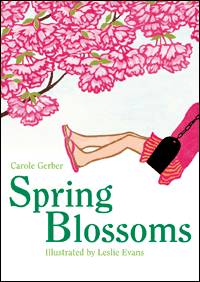
 Spring Blossoms by Carole Gerber with illustrations by Leslie Evans is another one of these experiential books I'm fond of. With this one, you just sink into the experience of spring by focusing only on flowering trees.
Spring Blossoms by Carole Gerber with illustrations by Leslie Evans is another one of these experiential books I'm fond of. With this one, you just sink into the experience of spring by focusing only on flowering trees.
The early part of the books involves just how some flowering trees look. After you get used to that, you move on to trees that bear both male and female blooms. Moving on, we come to pollen moving from male blooms to female blooms on balsam firs. There's a progression from less sophisticated information to more sophisticated.
I'm aware that I've been focusing a lot on picture books for this environmental book club. I'm working on that.
View Next 25 Posts



